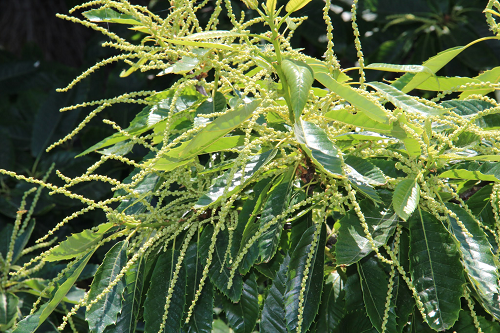Washington (ISJ) – Inspired by traditional folk remedies of Italy, scientists at a US University has isolated a molecule extracted from the leaves of the European chestnut tree, which can neutralise dangerous, drug-resistant staph bacteria.
Researchers at Emory University in Atlanta, the United States dubbed the molecule Castaneroxy A, after the genus of the European chestnut, Castanea. The findings were published in the journal Frontiers in Pharmacology.
“We were able to isolate this molecule, new to science that occurs only in very tiny quantities in the chestnut leaves” said Cassandra Quave, senior author of the research paper and associate professor in Emory’s Centre for the Study of Human Health and the School of Medicine’s Department of Dermatology. “We also showed how it disarms Methicillin-resistant Staphylococcus aureus by knocking out the bacteria’s ability to produce toxins.”
Methicillin-resistant Staphylococcus aureus (MRSA) causes infections that are difficult to treat due to its resistance to antibiotics. It is one of the most serious infectious disease concerns worldwide, labelled as a “serious threat” by the Centres for the Disease Control and Prevention. In the United States alone, nearly 3 million antibiotic-resistant infections occur in the U.S. each year, killing more than 35,000 people.
Antibiotics work by killing staph bacteria, which can lead to greater resistance among those few bacteria that survive, spawning “super bugs.” The Quave lab has identified compounds from the Brazilian peppertree, in addition to the European chestnut tree, that simply neutralize the harmful effects of MRSA, allowing cells and tissue to naturally heal from an infection without boosting resistance.
“We’re trying to fill the pipeline for antimicrobial drug discovery with compounds that work differently from traditional antibiotics,” Quave said. “We urgently need these new strategies.” She notes that antimicrobial infections kill an estimated 700,000 globally each year, and that number is expected to grow exponentially if new methods of treatment are not found.
Quave is a medical ethnobotanist, researching traditional plant remedies to find promising leads for new drugs. Although many major drugs are plant-based, from aspirin (the bark of the willow tree) to Taxol (the bark of the Pacific yew tree), Quave is one of the few ethnobotanists with a focus on antibiotic resistance.
The story behind the current paper began more than a decade ago, when Quave and her colleagues researched written reports and conducted hundreds of field interviews among people in rural southern Italy. That pointed them to the European, or sweet, chestnut tree, native to Southern Europe and Asia Minor. “In Italian traditional medicine, a compress of the boiled leaves is applied to the skin to treat burns, rashes and infected wounds,” Quave explained.
Quave took specimens back to her lab for analysis. By 2015, her lab published the finding that an extract from the leaves disarms even the hyper-virulent MRSA strains capable of causing serious infections in healthy athletes. Experiments also showed the extract did not disturb normal, healthy bacteria on skin cells.
Finally, the researchers demonstrated how the extract works, by inhibiting the ability of MRSA bacteria to communicate with one another, a process known as quorum sensing. MRSA uses this sensing signalling system to make toxins and ramp up its virulence.
The Quave lab first separated out a group of molecules from the plant extract, cycloartane triterpenoids, and showed for the first time that this group actively blocks the virulence of MRSA. The researchers then dove deeper, separating out the single, most active molecule from this group, now known as Castaneroxy A.
“Our homemade piece of equipment really helped accelerate the pace of our discovery,” Quave said. “We were able to isolate this molecule and derive pure crystals of it, even though it only makes up a mere .0019 percent of the chestnut leaves.”
Tests on mouse skin infected with MRSA, conducted in the lab of co-author Alexander Horswill at the University of Colorado, confirmed the molecule’s efficacy at shutting down MRSA’s virulence, enabling the skin to heal more rapidly.
“We’re laying the groundwork for new strategies to fight bacterial infections at the clinical level,” Quave said. “Instead of being overly concerned about treating the pathogen, we’re focusing on ways to better treat the patient. Our goal is not to kill the microbes but to find ways to weaken them so that the immune system or antibiotics are better able to clear out an infection.”
Scientists at the Emory University have also compiled a comprehensive review of plant natural products that play a role in antibacterial activity, to serve as a guide in the search for new drugs to combat antibiotic-resistant pathogens. This includes 459 plant natural products that met rigorous criteria for demonstrating antibacterial activity.
“We hope that chemists and pharmacology researchers will use our review as a guide to dig deeper into the promising potential of many plant compounds,” said Quave.
Source: Emory University
Image courtesy: Emory University


